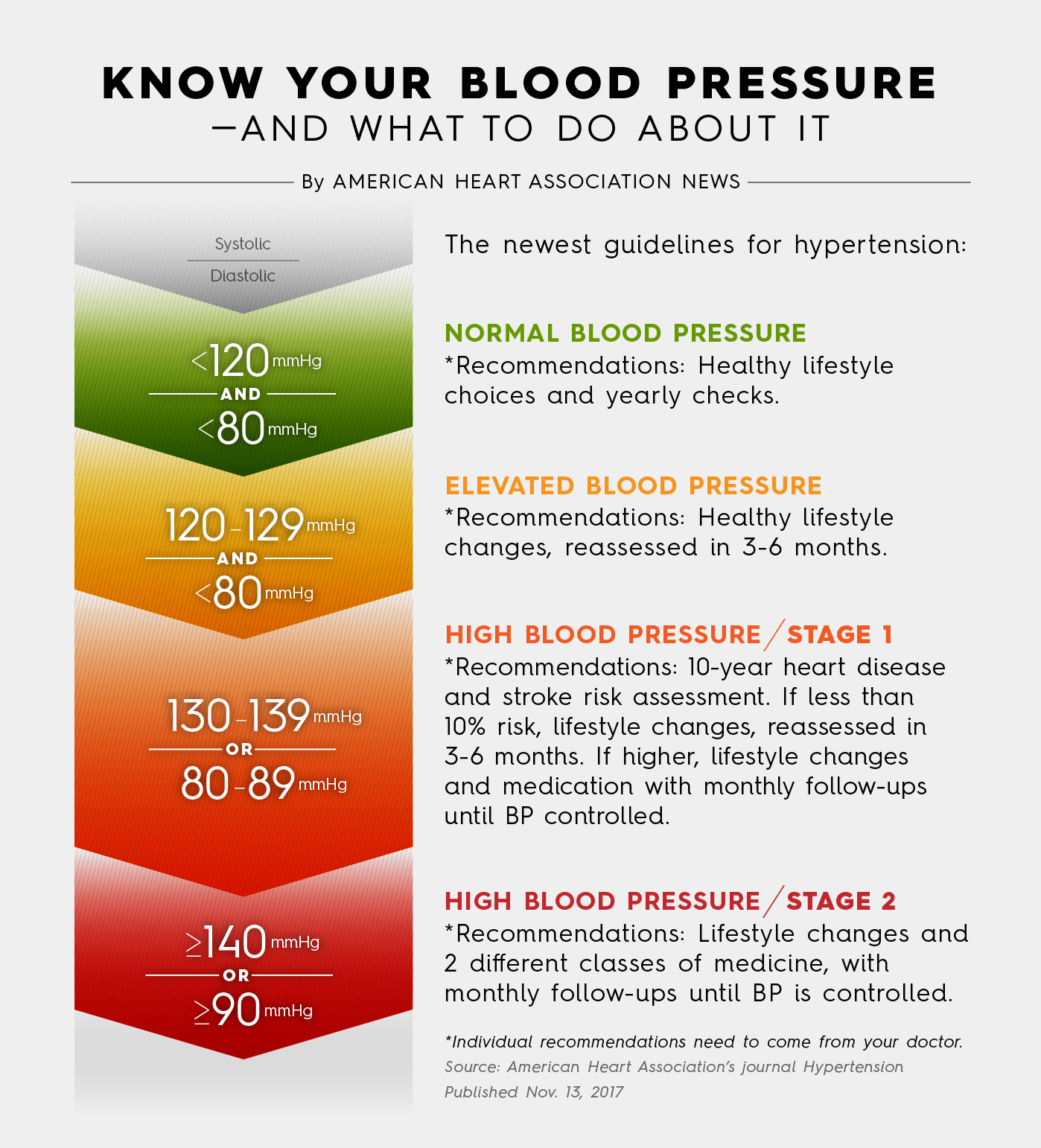Transparency is extremely important to us, so we are letting you know that we may receive a commission on some of links you click on from this page. See our disclaimer.
As was widely reported, this week the American College of Cardiology and the American Heart Association jointly released new high blood pressure guidelines lower definition of hypertension.
The ACC writes: “High blood pressure should be treated earlier with lifestyle changes and in some patients with medication – at 130/80 mm Hg rather than 140/90 – based on new ACC and American Heart Association (AHA) guidelines for the detection, prevention, management and treatment of high blood pressure.”
“The new guidelines – the first comprehensive set since 2003 – lower the definition of high blood pressure to account for complications that can occur at lower numbers and to allow for earlier intervention. The new definition will result in nearly half of the U.S. adult population (46 percent) having high blood pressure, with the greatest impact expected among younger people. Additionally, the prevalence of high blood pressure is expected to triple among men under age 45, and double among women under 45, the guideline authors note. However, only a small increase is expected in the number of adults requiring antihypertensive medication.”
Said Paul K. Whelton, MB, MD, MSc, FACC, lead author of the guidelines: “You've already doubled your risk of cardiovascular complications compared to those with a normal level of blood pressure. We want to be straight with people – if you already have a doubling of risk, you need to know about it. It doesn't mean you need medication, but it's a yellow light that you need to be lowering your blood pressure, mainly with non-drug approaches.”
Adds the AHA: “The new guideline is designed to help people take steps to control their blood pressure earlier, according to the authors. High blood pressure, also known as hypertension, is a major risk factor for heart disease and stroke – the two leading causes of death in the world.”
“Yes, we will label more people hypertensive and give more medication, but we will save lives and money by preventing more strokes, cardiovascular events and kidney failure,” said Kenneth Jamerson, M.D., Ph.D., professor of internal medicine and hypertension specialist at the University of Michigan Health System. He is one of 21 experts on the guideline writing committee. “If you are going to put money into the healthcare system, it’s to everyone’s advantage if we treat and prevent on this side of it, in early treatment.”
Further: “Instead, the guideline, published in the AHA’s journal Hypertension, emphasizes that doctors need to focus on a whole framework of healthier lifestyle changes for patients.”
To that end, tomorrow we'll review previous work connecting workplace wellness efforts and the positive benefits towards reducing blood pressure.






0 Comments